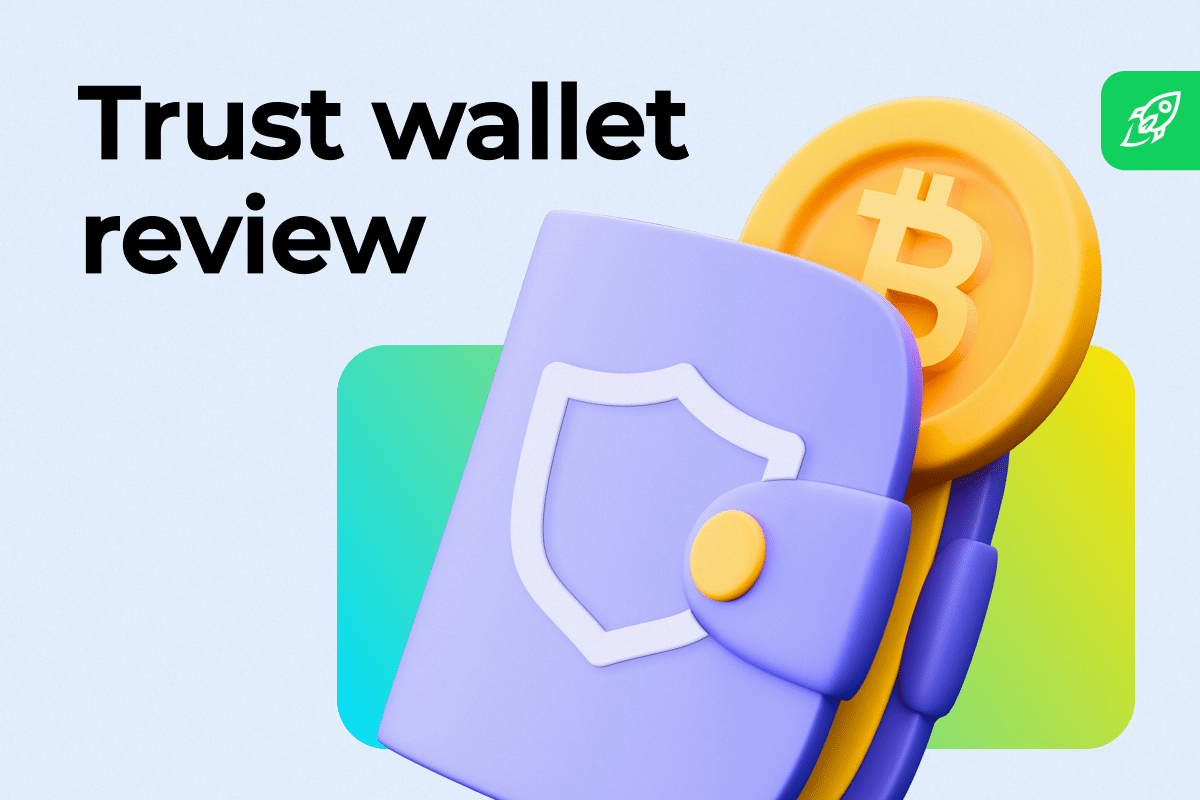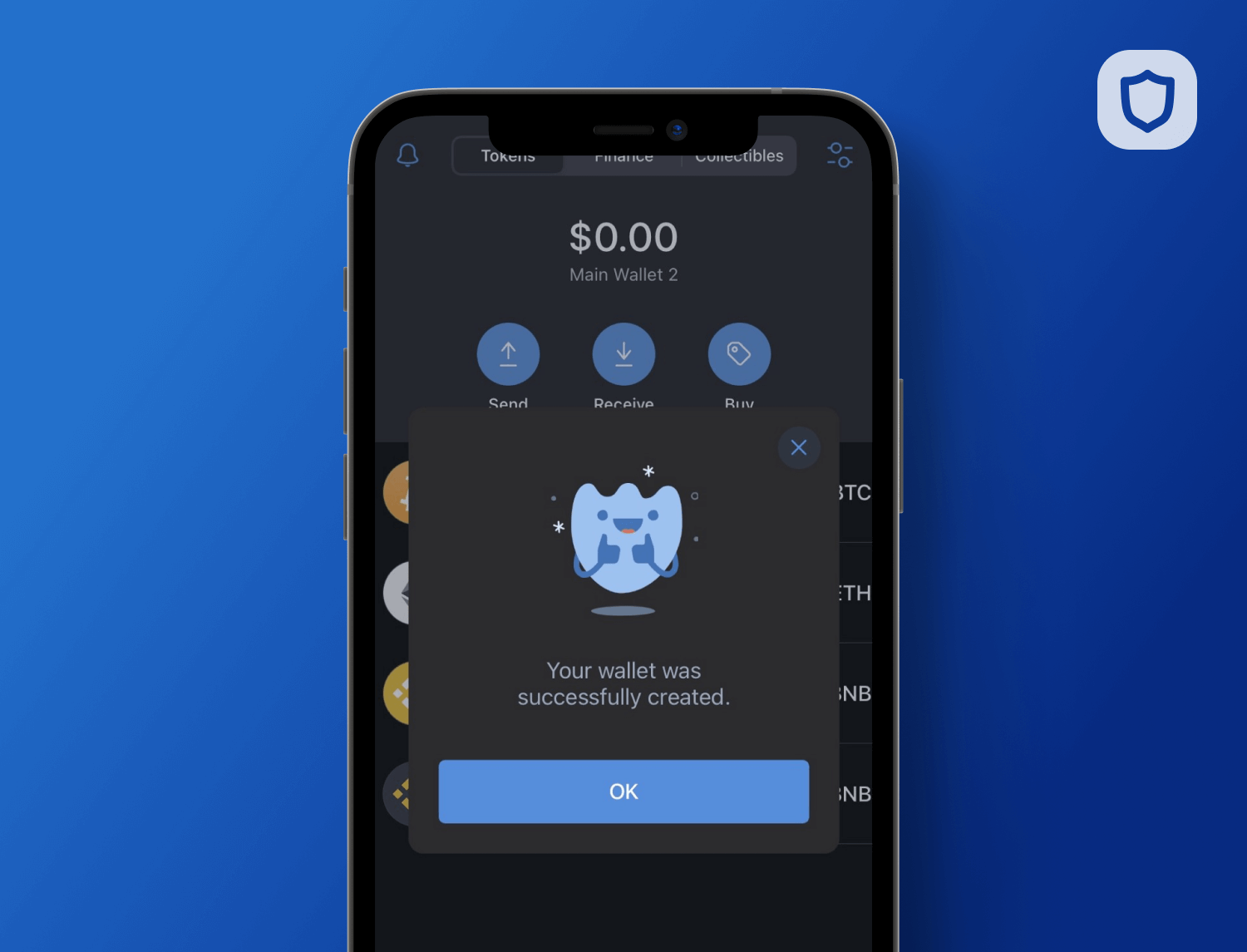No digital wallet, including Trust Wallet, can be 100% safe. While Trust Wallet employs advanced security measures to protect user assets, the overall safety also heavily depends on the users’ security practices and vigilance.

Understanding the Security Architecture of Trust Wallet
Trust Wallet’s security architecture is designed to safeguard users’ digital assets by employing state-of-the-art encryption, local storage of private keys, and a commitment to continuous security evaluations and updates. This multi-layered approach ensures both the integrity and accessibility of users’ funds.
The Role of Encryption in Protecting Assets
- End-to-End Encryption: Trust Wallet uses advanced encryption techniques to secure data transmission between the user’s device and blockchain networks, ensuring that sensitive information remains confidential and inaccessible to unauthorized parties.
- Data At Rest Encryption: The wallet encrypts all sensitive data stored on the user’s device, including private keys. This encryption acts as a formidable barrier against potential attackers attempting to access the stored data directly from the device.
Local Storage of Private Keys: Benefits and Considerations
- Direct Control Over Assets: By storing private keys directly on the user’s device, Trust Wallet ensures that users have full control over their cryptocurrencies without relying on a centralized authority. This decentralization minimizes the risk of mass breaches or platform outages affecting access to funds.
- Security Responsibility: While local storage offers enhanced security, it also places the onus of safeguarding these keys on the user. Proper security practices, such as device encryption and secure backups, are essential to prevent loss or theft.
Continuous Security Audits and Updates
- Regular Security Assessments: Trust Wallet undergoes periodic security audits conducted by independent third-party experts. These audits help identify and rectify potential vulnerabilities, enhancing the overall security of the wallet.
- Ongoing Updates: The development team regularly releases updates to the Trust Wallet app, incorporating the latest security enhancements and features. Users are encouraged to keep their app updated to benefit from these improvements and protect against newly identified threats.
Common Risks Associated with Cryptocurrency Wallets
Cryptocurrency wallets, while offering a secure means to store digital assets, are not immune to threats. Users must be aware of the risks and adopt measures to safeguard their assets effectively.
The Threat of Phishing Attacks and How to Avoid Them
- Recognizing Phishing: Phishing attacks typically involve tricking users into revealing sensitive information like private keys or recovery phrases through fake emails, websites, or social media messages that mimic legitimate entities.
- Preventive Measures: Always verify the authenticity of communication and never click on suspicious links. Trust Wallet and other reputable services will never ask for your private keys or recovery phrases via unsolicited communications.

Malware and Spyware: Identifying and Mitigating Risks
- Understanding the Threat: Malware and spyware can infiltrate devices, stealing sensitive information or even taking control of your cryptocurrency wallets. These threats can come from malicious websites, email attachments, or unverified apps.
- Protection Strategies: Ensure your device’s operating system and security software are up-to-date. Avoid downloading apps or opening attachments from unknown sources, and conduct regular security scans to detect and remove malicious software.
The Importance of Device Security in Wallet Safety
- Device-Level Protections: The security of a cryptocurrency wallet is closely tied to the device it resides on. Compromised device security can lead to unauthorized wallet access.
- Enhancing Security: Use strong passwords, enable two-factor authentication (2FA) where possible, and consider biometric verifications for device access. Encrypt your device to protect stored data and consider using dedicated devices for your cryptocurrency transactions if feasible.
User’s Role in Wallet Security
The security of cryptocurrency wallets is not solely dependent on the technology behind them but also on the users’ awareness and practices. Understanding and implementing best practices for security can significantly enhance the safety of digital assets.
Best Practices for Keeping Recovery Phrases Secure
- Physical Storage: Write down your recovery phrase on paper and store it in a secure, private location, such as a safe or a locked drawer. Avoid storing it digitally to prevent hacking risks.
- Avoid Sharing: Never share your recovery phrase with anyone, regardless of the request’s perceived legitimacy. Trust Wallet or any other reputable service will never ask for your recovery phrase.
- Multiple Copies: Consider keeping multiple secure copies in different locations to protect against loss due to accidents or natural disasters.
The Significance of Regularly Updating Wallet Software
- Enhanced Security: Each update may contain critical security enhancements and vulnerabilities patches that protect your wallet from new threats.
- New Features: Updates often include new features and improvements that can enhance the user experience and offer additional layers of security.
- Compatibility: Keeping your wallet software updated ensures compatibility with the broader cryptocurrency ecosystem, including networks and services.
Tips for Strong Password Creation and Management
- Complexity: Use passwords that are long and complex, combining letters (both uppercase and lowercase), numbers, and symbols.
- Uniqueness: Avoid reusing passwords across different sites and services. Each password should be unique to prevent a single breach from compromising multiple accounts.
- Password Managers: Consider using a reputable password manager to securely store and manage your passwords. These tools can also generate strong, random passwords for you.
- Regular Changes: Regularly update your passwords, especially for accounts related to financial transactions and cryptocurrency wallets.
The Limitations of Digital Wallet Security
While digital wallets like Trust Wallet employ advanced security measures to protect users’ assets, there are inherent limitations and external factors that can pose risks. Understanding these limitations is crucial for navigating the cryptocurrency ecosystem safely.
The Inherent Risks of Decentralized Finance (DeFi) Platforms
- Smart Contract Vulnerabilities: DeFi platforms operate on smart contracts, which, despite rigorous testing, can contain vulnerabilities that hackers might exploit to drain funds.
- Lack of Regulation: The decentralized nature of DeFi means it’s largely unregulated, resulting in fewer consumer protections compared to traditional finance.
- User Error: The permissionless and irreversible nature of transactions on DeFi platforms can lead to significant losses due to user errors, with no recourse for recovery.
Understanding the Vulnerabilities in Smart Contracts
- Code Flaws: Smart contracts are only as secure as their code. Small mistakes or oversights can lead to vulnerabilities that can be exploited by attackers.
- Audit Importance: While many DeFi projects undergo security audits, the quality and thoroughness of these audits can vary, leaving some vulnerabilities undetected.
- Rapid Development: The fast pace of innovation and development in the DeFi space can sometimes prioritize speed over security, increasing the risk of vulnerabilities.

The Role of Network Congestion in Transaction Security
- Delayed Transactions: High congestion on blockchain networks can lead to delayed transaction confirmations. This delay can affect the timely execution of security measures, like moving assets to a safer wallet during an attack.
- Increased Fees: During periods of congestion, transaction fees can skyrocket, making it cost-prohibitive to execute transactions quickly. This can be particularly problematic when trying to respond to security incidents.
- Front-Running Risks: Congestion can lead to an increased risk of front-running, where attackers exploit the visibility of pending transactions to their advantage by paying higher fees to have their transaction confirmed first.
Digital wallet security, while robust, cannot fully mitigate the risks posed by external factors like DeFi platform vulnerabilities, smart contract flaws, and network congestion. Users must remain vigilant, educate themselves about the risks, and adopt best practices to safeguard their assets in the dynamic and evolving landscape of cryptocurrency.